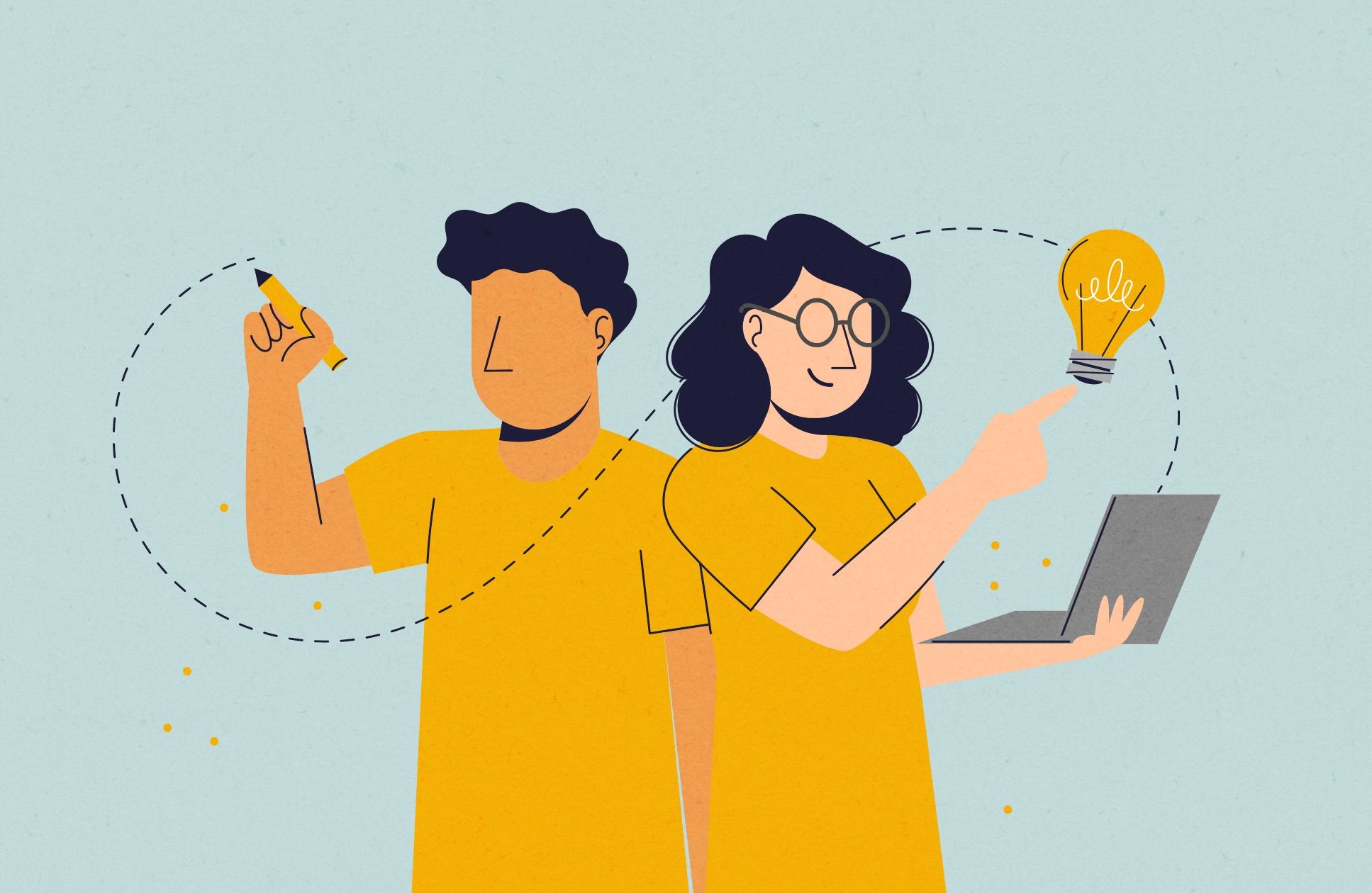Hard And Soft Skills Of Designers


What skills do designers should have? There are a lot of skills sets that we can only imagine. But if to be more specific than I think we need to categorize skills somehow.
First of all, we have 2 big categories that can work not only for designers but is still a good start. We can have soft and hard skills. It is not about a style of work or the complexities of the design workflow. We will talk about this in detail. We need to have different soft and especially hard skills. You will see what I mean...
Hard skills
If we talk about UX designers, then we can have the next skills:
Design theory
This is a knowledge where we need to start to learn design. It covers design principles, conventions, patterns, different theoretic knowledge, methodology, studies, and even psychology of perception. With this knowledge, you can spend less time creating different concepts because you do not need to spend time on cases where you can use knowledge of the previous experience of designers, artists, and psychologists. The only problem with the last one is that you need to learn how to interpret it in the design area.
Paper sketches
This skill is helpful to sketch quick ideas, draw and plan interactions, use cases, and user stories. Sometimes it's good to have it as an additional skill. Of course, a skillset of a designer sometimes consists of small pieces of knowledge and experiences.
Photoshop
It is a legendary software that all designers and non-designers know. It's good for raster graphics, corrections, and preparation of photos and different images, including compositions that we can use in the interface. Or maybe for creating a basic GIF animation. But still, it is not the main software for UX/UI designers. However, some time ago, it was hard to find any alternative software that we could use to create visual interfaces. Yes, and also the...
Illustrator
It's good for vector graphics, icons, illustrations. Some designers use it to create complete UI design projects. The biggest plus here is that we can create a scalable design. I mean, it almost does not matter what size of the icon you have in illustrator. You can make it double size, 10x size, or even 100x size without loss of quality since the graphics here are based on curves, so pretty much it's scalable.
Sketch
It is a new generation software that economy a bunch of time with its simple interface. It has so good UX that you even do not need to think about how you can do actions that seem difficult in Illustrator. But let's talk about how it improves the work of UX/UI designers. The main point here is that designers can focus on the design solutions rather than doing it in the software. Graphics created in Sketch is a vector as well as in Illustrator.
3D Software
Sometimes UX/UI designers use 3ds Max, Cinema 3D, or any other alternative software to create something in 3d projection. Especially if we talk about designers who create a design, not for the digital environment, but the physical world. And to do this, they need to create a 3D visualization of objects or interfaces. For instance, it can be an interface for a car or helicopter pilot panel, DJ players, and mixers. Of course, this kind of work starts from sketches that I mentioned before. But before start real production, it should be visualized in 3D. It helps to imagine how the end product will look and avoid crucial UI mistakes on the 3D visualization stage.
This is not a full list, and we can have different skills set. I am just giving you an understanding of this specific category of skills. Meanwhile, we can see what do soft skills mean and what options do we have.
Soft skills
Positive thinking
This is one of the most important and basic things that each designer and creative artist should have. Since, sometimes we have a bunch of negative obstacles that block our creativity, productivity or even make us angry about what we do and how to approach different situations. Thus, it is extremely important to look for the positive side of things. And, of course, learn from your mistakes, and try not always to avoid them. This will help you to find a positive side in a particular situation.
You can do more, better, epic, and even change the world, making other people happy with positive thinking.
Easy-going person
If you have already handled the first soft skill, then this one will be easy for you. We can have different situations in our professional life when people will try to manipulate us, ask us to work on terms that we do not like, comment on our work in a way that we do not have any experience to do this job properly etc. We can have several ways to handle it.
First of all, we can simply avoid people who undervalue you and your skills for some unexplained reason and find people working with whom is comfortable for you.
Advice number two — you can try different approaches in working with people mainly by searching for compromises and find common ground. And if for some reason you can't find common ground, then back to square one. If you feel that a lot of energy went away on a particular task or a conversation, you need to change something or move on.
Sometimes, we seek issues in a project or a task, and we think that the only right person is you. I have been in this position many times. And I assure you this point of view will not bring you good results in life or business.
To make yourself an easy-going person, you might want to consider searching for positive sides of any conversation. Always find what we can learn, listen to people, and try to help them if it is necessary.
I know that often it is hard to overstep yourself and serve people who seem not a good fit to do business with. But this can be viewed as a practice or a skill that can be super beneficial in any kind of negotiations in the future.
Be flexible and bend like water if that makes sense to you. Water has huge strength, and it can change the shape of rocks.
Self-organization
This skill is always useful. It is critical when you are a solopreneur or even an entrepreneur. You have to organize yourself, make plans, schedule meetings, etc.
You can split your 16 active hours for different tasks. So it's not only about the work you do, but you also need to feel healthy, share your time with your family, and get some rest.
In addition to the routines that I described earlier, you might have a responsibility for your employees, and sometimes you need to organize the work inside your company. It's a complex topic, but showing the direction of work and collaborating properly usually helps because eventually, you focus on the essential part only.
You need self-organization even if you work as an employee in a company. Since from the supervisor's perspective, it is hard to organize all the details. Especially in the case of big teams with different directions and areas of work. I believe in a modern business environment each specialist should be able to self-organize and be proactive, suggest ideas, be responsible for the work that you do, plan things to avoid a schedule collapse and overwhelming work that will not bring you something good in your life.
Productiveness
In addition to self-organization, I think each designer should be a proactive person. We are not design-servants unless we want to our business this way. And we can be passive and do all the actions that clients ask. Because in most of the cases, our clients or supervisors are not designers, and they do not have such professional backgrounds that we have.
In my experience, I've noticed that clients do not always mean what they actually want, or they simply don't know the actual solution they need.
What you can do is starting your conversation with simple questions like:
- Why do they want to change it, and why in this particular way?
- What brought them to this solution?
- Did they do it before or saw similar solutions elsewhere?
I recommend you ask the right questions, show your expertise, and gain trust. Only after that offer a solution that should really improve clients service and you both will be happy.
Communication skills
The only important thing that I can say here is that you need to have as much practice as you can. Speak with your clients, supervisors, managers. Try to communicate with business people on different levels. Explore different business and design communities to learn how people talk about projects, startups, business ideas.
Read books. I have a challenge for this year to read at least 54 books. It is equal to 1 boot a week. And it is, taking into account, that I am not a native speaker and all these books in my list in English (sometimes not plain English).
Listen to a podcast. Try noticing intonation, vocabulary, energy that people use in discussions. Try to find podcasts suitable for your specific situation and your business so that they would be engaging for you.
To make your communication skills richer, you need to try different things and speak with different people. It develops your creative and critical thinking as well.
Collaboration skills
Working solo is good at some point. Mostly on your personal projects or learning something specific. But when we do commercial design work, we start to collaborate with at least one person. It can be your supervisor or client. Often you collaborate with the whole team.
Even if you work from home or a coffee shop and sit alone, you still have people with whom you collaborate online. Sure, it feels different when you have physical meetings or Skype meetings. But in the modern world, we need to learn both ways of collaboration.
We have a digital nomads era. More and more people tend to work while they are traveling. And it really improves productivity indicators. I have tried, and it works perfectly well.
But still, we need to learn how to build communication with our clients online or in the office, how to make plans that work for the whole team. For instance, use the agile methodology or any other method that brings good results for your business. Plan timelines for the projects and build some expectations for outcomes at different stages of a project.
Discuss new ideas and make quick sketches to receive feedback instantly from other participants of the brainstorm session.
There is a lot of things that can be included here. People write whole books on team building and management.
Soft and hard skills are important categories for each successful designer. I am sure that we can extend this list and learn more to achieve a greater result in our life and professional career.
I hope this article was helpful to you.
Max